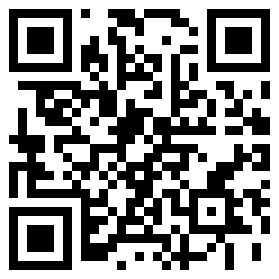Pengaruh variasi luas ujung pipa pada sistem resonansi bunyi kolom udara
Abstract
Abstrak. Kajian fenomena resonansi kolom udara yang ujungnya terbuka sebagian belum pernah ditemukan dalam materi pembelajaran fisika, menyebabkan pengetahuan konsep mahasiswa tentang resonansi kolom udara tidak utuh. Telah dilakukan perancangan alat sederhana dan penyelidikan resonansi sistem kolom udara berdasarkan variasi luas ujung terbuka untuk mengetahui pola hubungan antara variasi luas ujung pipa terbuka dengan frekuensi. Eksperimen ini dilakukan dengan suling pipa PVC tanpa lubang nada yang ditiup dengan alat sederhana yang dirancang sebagai kompresor balon. Sinyal suara yang dihasilkan direkam dengan software Audacity dan kandungan frekuensi harmonik dianalisis dengan algoritima Fast Fourier Transform (FFT). Hasil eksperimen menunjukkan bahwa variasi luas ujung pipa terbuka dari sistem kolom udara berpengaruh terhadap frekuensi bunyi secara logarithmic. Implikasi konsep ini dapat dijadikan sebagai bahan pertimbangan untuk mengembangkan diafragma pengatur luas ujung alat musik tiup sebagai pengatur tuning nada mengingat kebanyakan alat musik tiup tidak memiliki bagian penyetem nada.
Kata kunci: Variasi luas ujung kolom udara dan resonansi.
Abstract. Studies the resonance phenomenon at the open end partially of a pipe never been found in physics learning material, causing the students conceptual about pipe resonance to be incomplete. Simple apparatus and investigation of resonance pipe systems have been carried out based on the variation of open-end area to know the relationship with the frequency using a PVC flute pipe without tone holes and blown with a simple balloon compressor. Sound signals generated are recorded by Audacity software and to analyze the harmonic frequency content using the Fast Fourier Transform (FFT) algorithm. The results of this study show that the variation wide of the open end of the air column significantly influences the sound frequency as logarithmic. The implication of this concept can be used as a diaphragm to regulates the wide-open end of a wind instrument as a tuning tone.
Keywords: Resonance and Variation of the ends of the air column.
Full Text:
PDFReferences
R. Worland, “2aMU2. Flute measurements in a Physics of Music lab,†Proc. Meet. Acoust., vol. 20, no. 1, pp. 1–14, 2014.
A. Yavuz, “Measuring the speed of sound in air using smartphone applications,†Phys. Educ., vol. 50, no. 3, pp. 281–284, 2015.
B. Brazzle, “Inexpensive Instruments for a Sound Unit,†Phys. Teach., vol. 49, no. 4, pp. 228–230, 2011.
M. C. LoPresto, “Measuring End Correction for a Quarter-Wave Tube,†Phys. Teach., vol. 43, no. 6, pp. 380–380, 2005.
M. C. Lopresto, “Experimenting with end-correction and the speed of sound,†Phys. Educ., vol. 46, no. 4, pp. 437–439, 2011.
S. R. Iqbal, H. Mazin, A. Majeed, A. Shinas, and S. O. Oman, “End Correction of a Resonant Standing Wave in Open Pipes of Different Diameters,†vol. 3, no. 4, pp. 21–25, 2013.
M. E. Bacon and S. Torok, “An Experimental Investigation of the End Effects for Blue Man Group® Pipes,†Phys. Teach., vol. 49, no. 3, pp. 152–154, 2011.
S. Maisyaroh, H. Mariyo, Supahar, and H. Kuswanto, “Development of sound wave experimentation tools influenced by wind velocity,†J. Phys. Conf. Ser., vol. 1440, p. 012021, 2020.
H. Mariyo, N. Islami, and Azizahwati, “Development of Sound Wave Experimentation Tools Which Influenced by Relative Humidity Using Audacity,†J. Phys. Conf. Ser., vol. 1351, p. 012056, 2019.
J. Pebralia and S. P. Anggun, “Pemanfaatan Suling Diatonik Untuk Menghitung Frekuensi dan Cepat Rambat Bunyi di Udara Menggunakan Software Audacity,†J. Inov. Pendidik., vol. 9, no. 2, pp. 49–56, 2019.
I. M. Sari, K. Anwar, E. Kurdita, and N. Rustaman, “Sundanese flute: from Art and Physics perspective,†vol. 57, no. ICMSEd 2016, pp. 221–225, 2017.
E. Nursulistiyo, “Pemanfaatan Suling Bambu Pentatonik Sebagai Media,†Semin. Nas. Quantum, pp. 1–8, 2015.
E. A. Muhafid, U. Terbuka, U. A. Dahlan, and P. Organa, “Pengembangan Alat Eksperimen Bunyi Dengan Sistem Akuisisi Data Berbasis Smartphone Android,†J. Fis., vol. 4, no. 2, pp. 83–87, 2014.
O. Stafford, “Experimenting with a ‘Pipe’ Whistle,†Phys. Teach., vol. 50, no. 4, pp. 229–230, 2012.
R. Jaafar, A. N. Mat Daud, S. Ali, and S. K. Ayop, “Three-in-one resonance tube for harmonic series sound wave experiments,†Phys. Educ., vol. 52, no. 4, 2017.
J. Groppe, “The Hope of Audacity® (To Teach Acoustics),†Phys. Teach., vol. 49, no. 2, pp. 99–102, 2011.
M. Bin, “Measuring the Speed of Sound Using Only a Computer,†Phys. Teach., vol. 51, no. 5, pp. 295–297, 2013.
A. Gailey, “Signal Frequency Spectra with Audacity®,†Phys. Teach., vol. 53, no. 4, pp. 239–243, 2015.
T. Bobinska and A. Buikis, “A mathematical model for a willow flute,†Recent Adv. Fluid Mech. Heat Mass Transf. - Proc. 9th IASME / WSEAS Int. Conf. Fluid Mech. Aerodyn. FMA’11, Proc. 9th IASME / WSEAS Int. Conf. HTE’11, no. 2, pp. 188–192, 2011.
T. Bobinska, MATHEMATICAL MODELS AND THEIR SOLUTIONS Field : Mathematics Subfield : Mathematical modelling Scientific supervisor : 2014.
P. A. Vienna, “THE INFLUENCE OF NICKS ON THE SOUND PROPERTIES AND THE AIRFLOW IN,†pp. 16–19, 2015.
DOI: http://dx.doi.org/10.12928/jrkpf.v7i1.15814
Refbacks
- » —
Copyright (c) 2020 Khairil - Anwar
Jurnal Riset dan Kajian Pendidikan Fisika | Journal of Research and Physics Education Studies
Kampus 4 Universitas Ahmad Dahlan
Jl. Kolektor Ring Road Selatan, Tamanan, Banguntapan, Bantul, Daerah Istimewa Yogyakarta
Telp. (0274) 563515, ext. 43514; Fax. (0274) 564604, Hp. +62822 3634 7674
Email: jrkpf@pfis.uad.ac.id
e-ISSN: 2355-620X
This work is licensed under a Creative Commons Attribution-NonCommercial 4.0 International License
Best viewed on Mozilla Firefox at screen resolution 1366 x 768 pixels.
View My Stats







